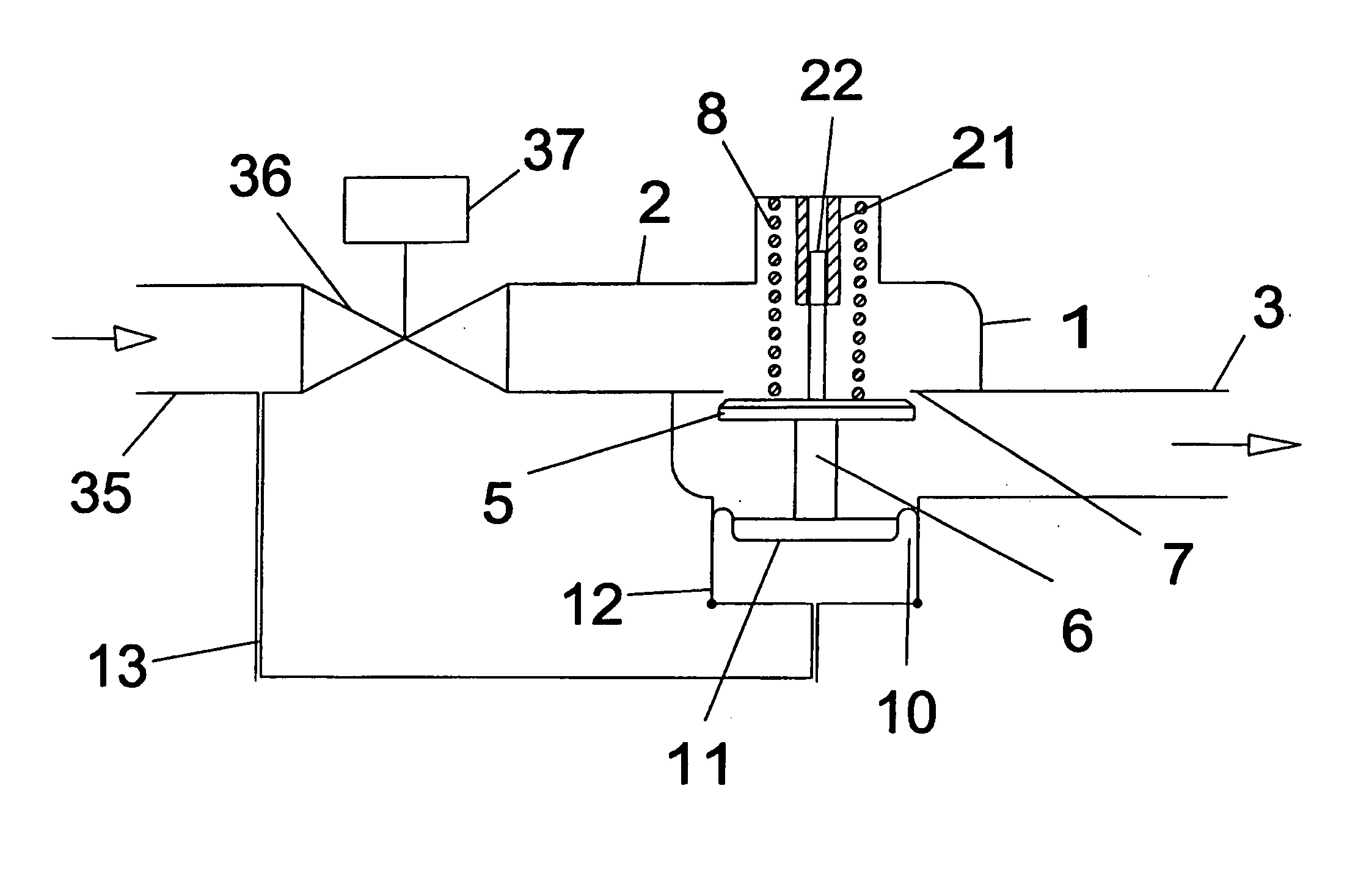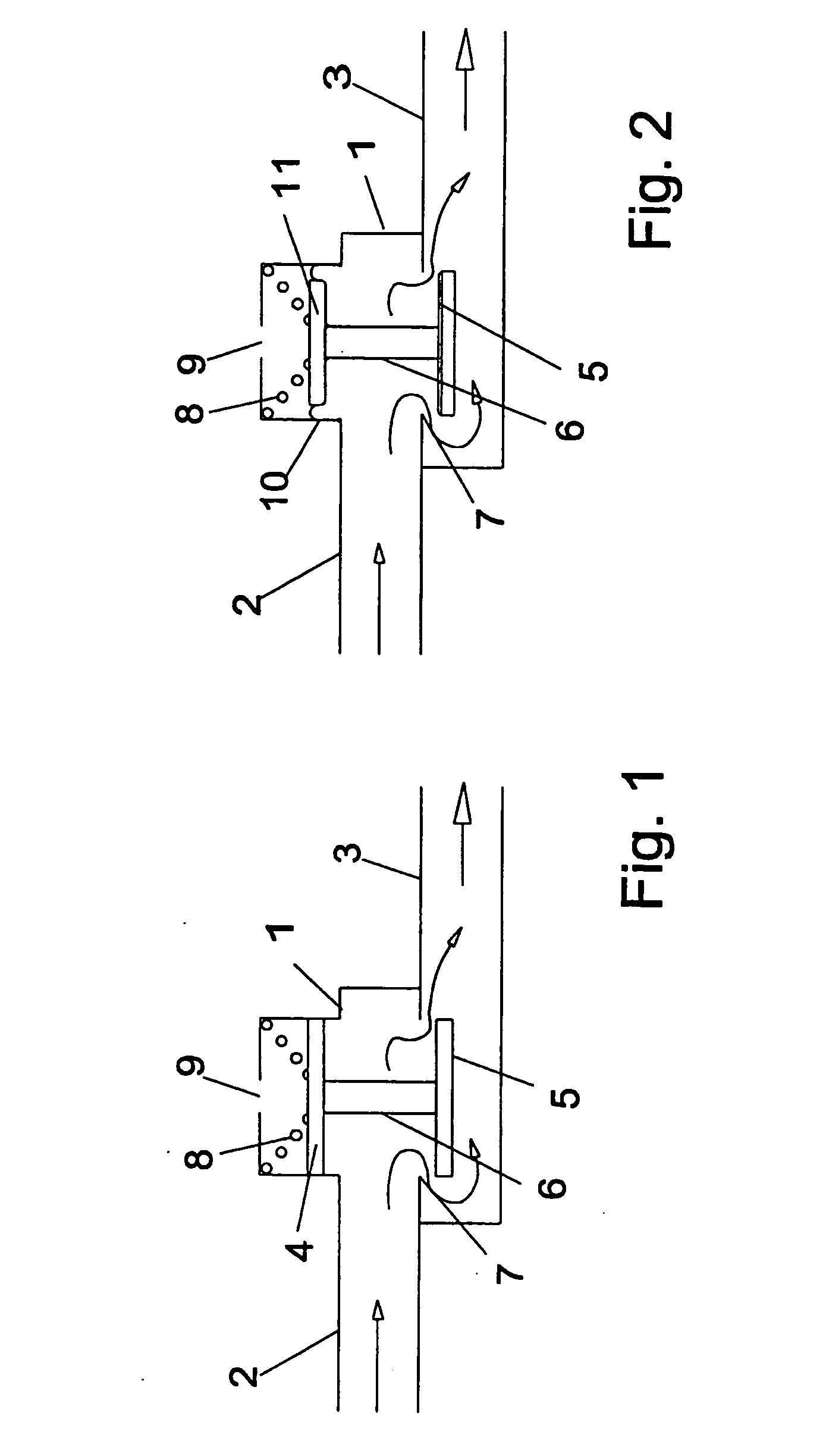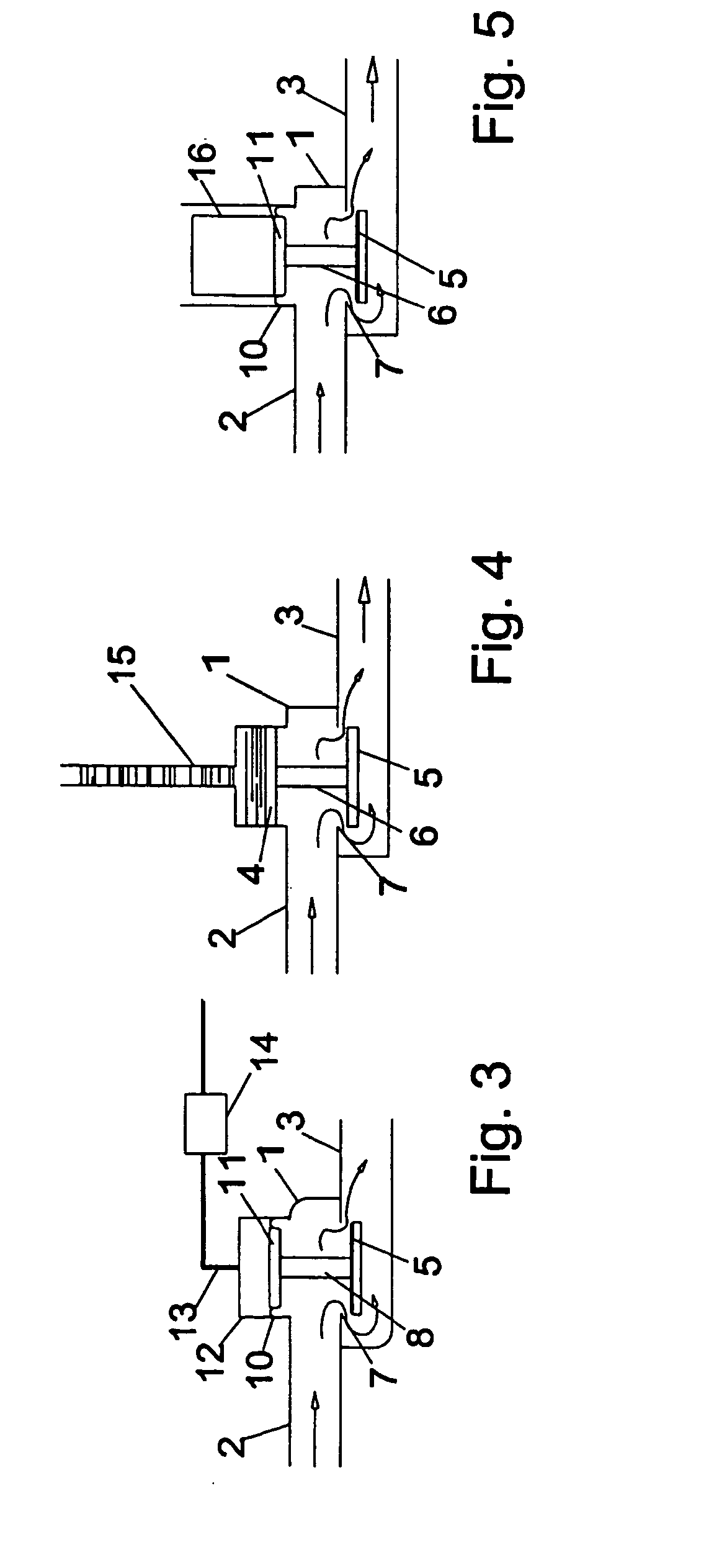Pressure independent control valve
a control valve and pressure independent technology, applied in the direction of fluid pressure control, process and machine control, instruments, etc., can solve the problems of large control surface, net force that moves the diaphragm, and unbalance between the two forces
- Summary
- Abstract
- Description
- Claims
- Application Information
AI Technical Summary
Benefits of technology
Problems solved by technology
Method used
Image
Examples
example 1
; A=10 sq.in B=10 sq.in S=100 lb When P1=10 psig P2=((100 −10(10−10)) / 10=10 psig When P1=100 psig P2=((100 −100(10−10)) / 10=10 psig There is no change in P2 when P1 is increased from 10 to 100 psig.
example 2
; A=9 sq.in B=10 sq.in S=100 lb When P1=10 psig P2=((100−10(10−9)) / 9=10 psig When P1=100 psig P2=((100−100(10−9)) / 9=0 psig
P2 changes from 10 psig to 0 psig when P1 increases from 10 psi to 100 psig. It is obvious that it is important that the effective areas of the diaphragm and the disk are the same. Otherwise the accuracy is compromised.
See FIG. 9. It is a back pressure APCV and controls the inlet pressure (P1). The control disk (5) is located above the seat (7). The flow direction is reversed compared to FIG. 1-8. The (upstream) inlet pressure (P1) acts upon the control disk (5) and together with the spring produces an upward force, which is balanced by the force produced by the (higher) pressure (P3) above the diaphragm (10). If instead, the pressure above the diaphragm is lower than the inlet pressure, the spring then is located above the diaphragm and pushes down. The lower part of the control disk (5) has an optional guide pin (22), which slides inside a guide bushing (...
PUM
 Login to View More
Login to View More Abstract
Description
Claims
Application Information
 Login to View More
Login to View More - R&D
- Intellectual Property
- Life Sciences
- Materials
- Tech Scout
- Unparalleled Data Quality
- Higher Quality Content
- 60% Fewer Hallucinations
Browse by: Latest US Patents, China's latest patents, Technical Efficacy Thesaurus, Application Domain, Technology Topic, Popular Technical Reports.
© 2025 PatSnap. All rights reserved.Legal|Privacy policy|Modern Slavery Act Transparency Statement|Sitemap|About US| Contact US: help@patsnap.com



